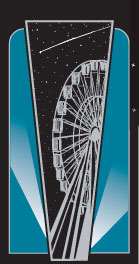







How bad is the problem?
IH 30 and US 80 concerns may seem simple to identify, but are actually quite complex. Yes, drivers experience congestion on these highways, especially during peak (commuter) hours. However, congestion may not necessarily be the problem, only a symptom. Problems behind symptoms might be outdated roadway design geometrics (since the two highways were originally designed in the 1950s) and of course an insufficient number of travel lanes---after all, the Dallas area has doubled in population over the last 20 years and is forecasted to double once again within the next 20 years! Needless to say, traffic backs up for over 10 miles during each work day.
The East Corridor project is more than simply moving people. Traffic problems also exist in the form of accidents and maintaining aging roadway facilities. IH 30 and US 80 freeways were designed for lower vehicular volumes and much lower design speeds and much has changed over the last half decade as far as vehicle designs, driver habits and expectations in terms of roadway-to-roadway consistency and federal and state geometric guidelines. Driving safety is prime when considering the re-design of IH 30 and US 80.
Vehicles age, have increasing maintenance costs, and eventually get replaced. Texas’ driving facilities which serve hundreds of thousands vehicles each day can relate…Texas currently spends 43% of its annual budget on maintaining the state’s 79,361 road miles, of which 24,869 lane miles receive annual pavement improvements. Until re-design and replacement, aging facilities such as IH 30 and US 80 contribute heavily to the state’s budget/maintenance burdens.
|
|
|
|
|
|
|
|
|
|



